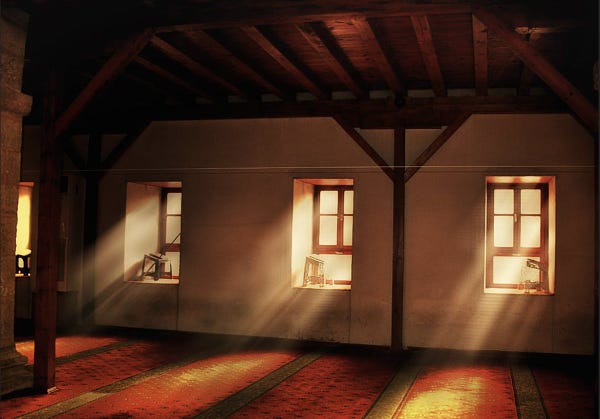Hello my friend!
It’s been a month since I published my first post here (Solar Manifesto Part 1.) and we are already over 100 strong in the solarchitecture tribe!
I thought that we should celebrate Q&A session in the comments of this issue!
Feel free to suggest any topic you want discussed, want me to write about in length or just have some questions about the solar architecture topics you’ve read so far. I am genuinely curious what brings you here and what can I make your time worthwhile! I will answer all questions!
Follow up ideas to the last post about circadian rhythm that came to me after I hit the publish button:
I’ve been using some solar apps by Ted Hunt: Circa Solar that shows the time on a 24 hour circle meshed with the suns path on the sky based on location and day of the year.


Circa Lunar, another app developed by Ted shows the stages of the moon-cycle so we can better align to it. There are studies that show that women and men react differently, have distinct mood-swings that can be related to the moon-cycle.
Next trick I’m using is from Widgetsmith shows you the solar path in a widget. You can change your conventional timekeeping widget to a solar one for a more calming experience.



Obviously, the best thing is to just spend as much time as we can in direct sunlight but these tools help us to become conscious of these forces whenever we open up our smartphones.
Arbitrariness of timekeeping: An obvious thing yet profound at the same time is that for example solar noon happens in different “moments“ in Time throughout the world:
Solar noon is 12.37 PM at my place, 11.57 AM at Budapest and 1.03 PM in Paris. This should tell you enough how carefully we should approach our arbitrary, mechanical timekeeping.
If everyone’s lunch starts at 1 PM yet our bodies want food at “solar noon“, just how much friction against nature are we causing via the hyper-efficient system by ignoring the body’s signals?
Siesta - the greatest invention of the latin nations is that they hit the pause button every day at 3 PM and have a siesta until 7 PM! I was amazed when I visited Italy just how precise and universal this rule is. It’s half inappropriate to do anything useful in the 3-7 PM interval - although the modern 9-5 grind dissolved some of the rigour that defines Mediterranean living.
The explanation is simple: The mediterranean afternoon heat is unbearable in the summer half of the year and siesta is a way to mitigate this by cutting the day in half after lunch is done - at around 3 PM or when the sun burns the hottest - so everyone pulls down the shutters for roughly 4 hours. At 7 PM - or when the sun’s heat starts to dwindle, people emerge. Those who have to - can do business dinners, run errands or just simply socialise on the warm streets of Italy, South France or Spain.
A life to be envied, isn’t it?
The last thought I want to share came when I was finishing up The not so big house by Sarah Susanka. It is a great book that resonates with many of my principles. My big beef in concept design is just how big houses got in the last 75 or so years in the developed world. 300 square meter / 3300 square feet homes are common everywhere. They have lots of large just-in-case rooms that fill up the land and steal the sun from the houses’ inhabitants.
The houses should serve everyday life as usefully as possible, through a neat, optimal floorplan that shelters as much sunlit rooms as possible. The rule of thumb I start designing with is that 30 square meter / 330 sqf should be enough per inhabitant in 99% of cases. I’m curious of your opinion about this!
That’s it for today, see you in the comments section below!
S







